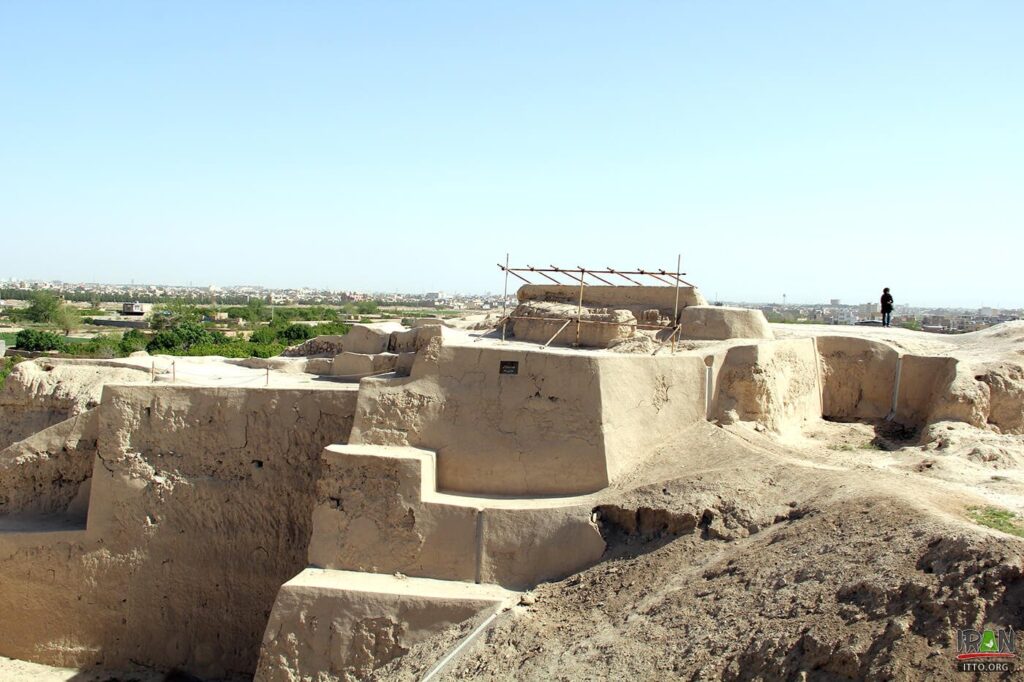Tepe Sialk: Ancient Iranian Archaeological Site
The world is full of ancient archaeological sites that offer a glimpse into the past. Tepe Sialk, located in Iran, is one of them. Dating back over 5,000 years, Tepe Sialk is an ancient site filled with mysteries and wonders. In this article, we’ll take a deep dive into Tepe Sialk and explore its history and significance.
What is Tepe Sialk?
Tepe Sialk is an ancient archaeological site located in the suburbs of the city of Kashan, in the province of Isfahan in Iran. It is believed to have been inhabited from around the 5th millennium BC to the 3rd millennium BC. The site covers an area of around 44 acres and consists of two large mounds known as the Sialk and Kalleh Sialk.
The Significance of Tepe Sialk
Tepe Sialk is regarded as one of the most important archaeological sites in Iran. It was first excavated by British archaeologist Sir Aurel Stein in the early 20th century. The findings at the site revealed valuable insights into the history of the ancient Iranian civilization.
The excavations at Tepe Sialk yielded a wealth of artifacts, including pottery, jewelry, weapons, and tools. These artifacts provided invaluable information about the everyday life and culture of the people who lived at the site. The artifacts also provided evidence of the development of writing during this period, as well as evidence of trade with other civilizations.
The Excavations at Tepe Sialk
The archaeological excavations at Tepe Sialk began in 1933 under the direction of Roman Ghirshman. Over the years, the excavations have revealed a wealth of artifacts and information about the site.
The first archaeological excavations revealed the remains of two large mounds, the Sialk mound and the Kalleh Sialk mound. The Sialk mound is believed to date back to the 5th millennium BC, while the Kalleh Sialk mound is believed to date to the 3rd millennium BC.
The excavations also revealed the remains of a ziggurat, or stepped pyramid, which is believed to have been built around the 4th millennium BC. The ziggurat was made of mud brick and is believed to have been used for religious ceremonies.
The excavations also revealed several burial sites, as well as a large number of artifacts. The artifacts include pottery, jewelry, weapons, tools, and other objects. These artifacts provide valuable insights into the everyday life and culture of the people who lived at the site.
In addition to the artifacts, the excavations also revealed evidence of an irrigation system, which is believed to have been in use from the 5th millennium BC to the 3rd millennium BC.
Visiting Tepe Sialk
Tepe Sialk is open to the public and can be reached by taking a bus from Kashan. The site is free to visit, although visitors must purchase a ticket at the entrance.
The site is open daily from 9am to 4pm, and there are several guides available to provide information about the site and its history. Visitors can also take a guided tour of the excavations and view some of the artifacts that have been found at the site.
Conclusion
Tepe Sialk is an ancient archaeological site located in Iran. It is believed to have been inhabited from the 5th millennium BC to the 3rd millennium BC and has yielded a wealth of artifacts and information about the ancient Iranian civilization. From pottery and jewelry to evidence of writing and trade, Tepe Sialk provides valuable insights into the daily life, culture, and history of the people who lived there thousands of years ago.
Visiting Tepe Sialk offers a unique opportunity to step back in time and explore the mysteries of this ancient site. Whether you’re fascinated by archaeology, history, or simply intrigued by the wonders of the past, Tepe Sialk promises an unforgettable journey into Iran’s rich cultural heritage. Don’t miss the chance to visit this remarkable site and uncover the secrets of its ancient civilization.

